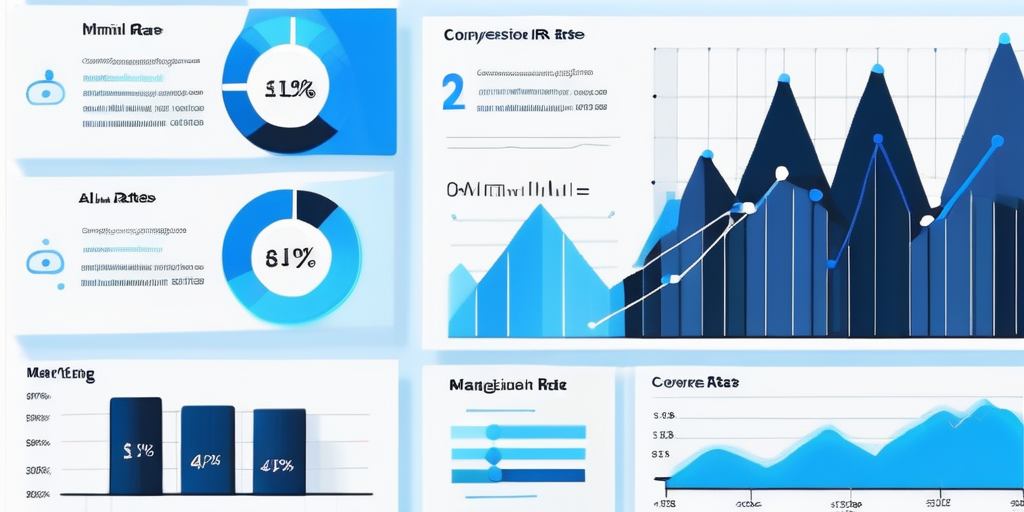In the digital age, the importance of email marketing in generating website leads cannot be overstated. It is a powerful tool that, when used effectively, can significantly boost a small business’s online presence and customer engagement. This article will delve into the intricacies of email marketing and its role in website lead generation.
Website leads are potential customers who have shown interest in your business by providing their contact information through your website. They are crucial for the growth of your business as they represent potential sales and revenue. Email marketing is a strategy that uses email to promote your business’s products or services, and it plays a pivotal role in converting website visitors into leads.
Understanding Email Marketing
Email marketing is a form of direct marketing that uses electronic mail as a means of communicating commercial or fundraising messages to an audience. It is a powerful tool for small businesses, allowing them to reach their audience in a cost-effective and efficient manner.
Despite the rise of social media and other forms of digital marketing, email marketing remains one of the most effective ways to reach and engage your audience. It allows businesses to build relationships with their customers, increase brand awareness, and ultimately drive sales.
The Importance of Email Marketing
Email marketing is important for several reasons. Firstly, it allows businesses to reach a large audience at a relatively low cost. Compared to traditional forms of marketing, such as print or television advertising, email marketing is significantly cheaper and offers a higher return on investment.
Secondly, email marketing allows businesses to target their audience more effectively. By segmenting your email list based on customer behavior or preferences, you can send personalized messages that are more likely to engage your audience and lead to conversions.
Components of an Effective Email Marketing Strategy
An effective email marketing strategy consists of several components. Firstly, you need to build a quality email list. This involves collecting email addresses from people who have shown interest in your business, either by visiting your website, purchasing your products, or signing up for your newsletter.
Secondly, you need to create engaging content. This involves crafting compelling subject lines, writing engaging body copy, and including clear calls to action. The goal is to grab your audience’s attention and encourage them to take a desired action, such as visiting your website or purchasing your product.
Generating Website Leads Through Email Marketing
Email marketing plays a crucial role in generating website leads. By sending targeted and personalized emails to your audience, you can encourage them to visit your website and take a desired action, such as filling out a contact form or making a purchase.

There are several strategies you can use to generate website leads through email marketing. These include offering exclusive deals or discounts, providing valuable content, and using strong calls to action.
Offering Exclusive Deals or Discounts
One effective way to generate website leads through email marketing is by offering exclusive deals or discounts. This strategy works by incentivizing your audience to visit your website and make a purchase.
For example, you could send an email to your audience offering a 20% discount on their next purchase if they visit your website and use a specific promo code. This not only encourages your audience to visit your website, but also incentivizes them to make a purchase, thereby generating a lead.
Providing Valuable Content
Another effective way to generate website leads through email marketing is by providing valuable content. This strategy works by offering your audience something of value in exchange for their contact information.
For example, you could send an email to your audience offering a free ebook or whitepaper on a topic relevant to your business. In order to download the ebook or whitepaper, your audience would need to visit your website and provide their contact information, thereby generating a lead.
Tracking and Measuring the Success of Your Email Marketing Campaigns
Tracking and measuring the success of your email marketing campaigns is crucial for understanding what works and what doesn’t. By analyzing your email marketing data, you can make informed decisions about how to improve your campaigns and generate more website leads.

There are several metrics you can track to measure the success of your email marketing campaigns. These include open rates, click-through rates, conversion rates, and bounce rates.
Open Rates
Open rates measure the percentage of recipients who open your email. This metric is important because it gives you an idea of how many people are actually seeing your email content.
A low open rate could indicate that your subject lines aren’t compelling enough, or that your emails are being marked as spam. To improve your open rates, you could try testing different subject lines, sending your emails at different times, or segmenting your email list to ensure you’re sending relevant content to each segment of your audience.
Click-Through Rates
Click-through rates measure the percentage of recipients who click on a link in your email. This metric is important because it gives you an idea of how many people are engaging with your email content and visiting your website.
A low click-through rate could indicate that your email content isn’t engaging enough, or that your calls to action aren’t clear or compelling enough. To improve your click-through rates, you could try testing different email content, including more compelling calls to action, or segmenting your email list to ensure you’re sending relevant content to each segment of your audience.
Conclusion
Email marketing is a powerful tool for generating website leads. By sending targeted and personalized emails to your audience, you can encourage them to visit your website and take a desired action, thereby generating a lead.

However, it’s important to remember that email marketing is not a one-size-fits-all solution. What works for one business may not work for another. Therefore, it’s crucial to test different strategies, track your results, and continually optimize your campaigns to ensure you’re getting the most out of your email marketing efforts.
Frequently Asked Questions
What is Email Marketing?
Email marketing is a digital marketing strategy that involves sending emails to a group of people to promote products or services, enhance customer relationships, or provide educational content. It’s a direct form of marketing that can be personalized to target specific segments of your audience, with the aim of converting prospects into customers and one-time buyers into loyal fans.
Why is Email Marketing important?
Email marketing is important for several reasons:
- High ROI: It consistently offers one of the highest returns on investment of any marketing strategy.
- Direct Communication: Email allows for direct communication with your audience, enabling personalized messaging.
- Customer Retention: It’s an effective tool for keeping your brand top-of-mind with existing customers, encouraging repeat business.
- Cost-Effective: Compared to other marketing channels, email marketing can be less expensive and more efficient at reaching a large audience.
- Measurable: With email marketing, you can track opens, clicks, and conversions, allowing for detailed performance analysis.
What are the best practices for Email Marketing?
Best practices for email marketing include:
- Permission-Based Lists: Only send emails to individuals who have opted in to receive them to comply with anti-spam laws and improve engagement rates.
- Segmentation: Divide your email list based on demographics, past behavior, or preferences to send more targeted and relevant messages.
- Personalization: Use the recipient’s name and tailor content based on their interests and previous interactions with your brand.
- Mobile-Friendly Design: Ensure your emails are readable and attractive on mobile devices, where a significant portion of users access their emails.
- Regular Testing: Experiment with subject lines, email content, and send times to determine what works best for your audience.
How can Email Marketing be measured and optimized?
The effectiveness of email marketing can be measured and optimized through various metrics, including:
- Open Rate: The percentage of recipients who open an email.
- Click-Through Rate (CTR): The percentage of recipients who click on one or more links contained in an email.
- Conversion Rate: The percentage of recipients who take a desired action after clicking a link in an email, such as making a purchase.
- Bounce Rate: The percentage of emails that could not be delivered to the recipient’s inbox.
- Unsubscribe Rate: The rate at which people opt-out from your email list. Optimization involves analyzing these metrics, testing different strategies, and refining your approach based on what performs best.
What legal considerations should be taken into account with Email Marketing?
Legal considerations for email marketing primarily revolve around compliance with laws such as the CAN-SPAM Act in the United States, GDPR in Europe, and CASL in Canada, which set forth guidelines for commercial email use. Key legal requirements include:
- Consent: Recipients must have explicitly opted in to receive emails.
- Identification: Emails must clearly identify the sender.
- Opt-Out Option: Every email must contain an easy way for recipients to unsubscribe from future communications.
- Truthful Subject Lines: The subject line must accurately reflect the content of the email.
Still unsure about Contact Button?
3 reasons to give it a try
- Start at no cost with our Basic Plan. We'll even help install your first button for free!
- Our all-in-one widget will make your website easier to use and help you capture more leads.
- All your existing website plugins, apps, and menus will still work after you install a Contact Button, so it can be easily removed if you no longer want it.
Basic Plan
Free
Good for websites with fewer than 1,000 visitors per month
- Up to 10 New Leads per Month
- Up to 100 Monthly Button Clicks
- Access to Premium Features
- Use Custom Google Fonts
- Hide Contact Button Branding
- Embed Your Own Affiliate Link
Max Plan
$5
/ month
Remove monthly limits and unlock premium features
- Unlimited Monthly Leads
- Unlimited Button Clicks
- Access to Premium Features
- Use Custom Google Fonts
- Hide Contact Button Branding
- Embed Your Own Affiliate Link